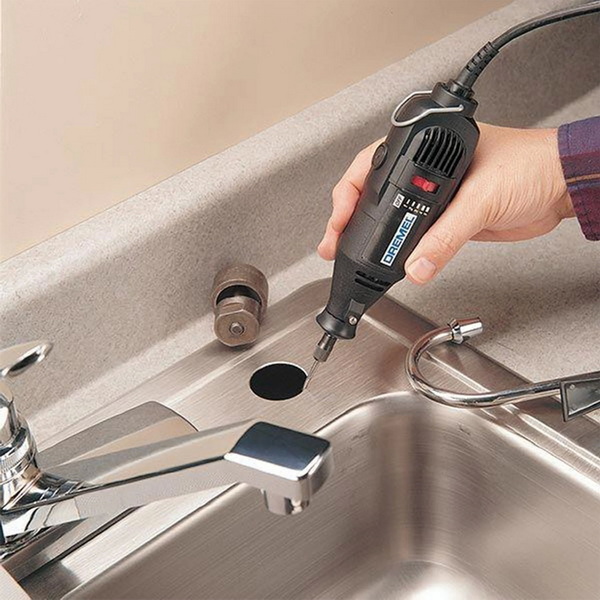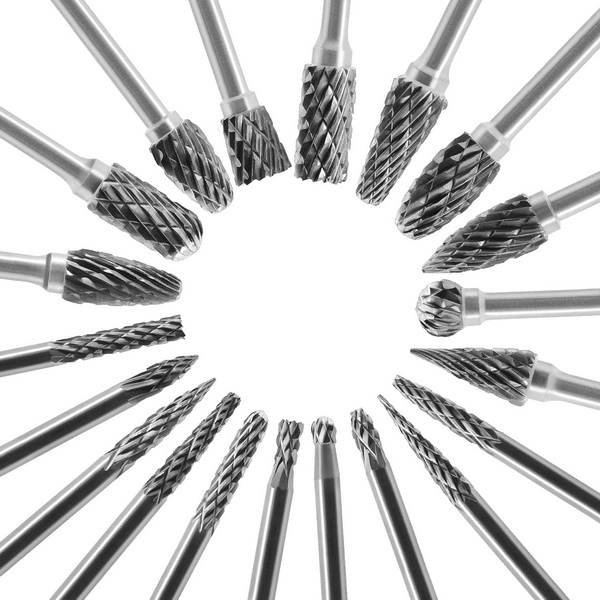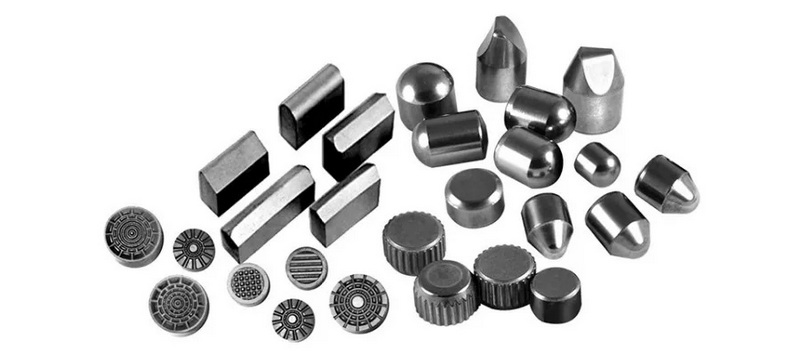Content Menu
● Introduction to Tungsten Carbide
>> Physical Properties of Tungsten Carbide
● Visual Characteristics of Tungsten Carbide Bits
● Physical Properties to Identify Carbide Bits
>> Weight
>> Magnet Test
>> Scratch Test
>> Spark Test
● Composition and Manufacturing
>> Role of Cobalt
● Applications of Tungsten Carbide Bits
>> Maintenance and Care
● Choosing the Right Carbide Bit for Your Project
>> Safety Precautions
● Comparison with Other Drill Bits
● Future Developments in Carbide Technology
● Conclusion
● FAQ
>> 1. What is the typical color of a tungsten carbide bit?
>> 2. How do I perform a scratch test on a drill bit?
>> 3. Why are tungsten carbide bits more expensive than steel bits?
>> 4. Can tungsten carbide bits be used for drilling through wood?
>> 5. How does the amount of cobalt affect the properties of a tungsten carbide bit?
● Citations:
Tungsten carbide bits are renowned for their exceptional hardness and durability, making them ideal for drilling through tough materials like hardened steel, cast iron, and concrete. Identifying a tungsten carbide bit can be crucial for ensuring you're using the right tool for your project. In this article, we'll explore the key characteristics and tests you can use to determine if a drill bit is made of tungsten carbide.

Introduction to Tungsten Carbide
Tungsten carbide is a compound of tungsten and carbon, known for its extreme hardness, ranking about 9.0–9.5 on the Mohs scale, which is almost as hard as diamond. This hardness, combined with its high melting point and resistance to wear, makes tungsten carbide an essential material in the production of cutting tools, including drill bits.
Physical Properties of Tungsten Carbide
- Hardness and Durability: Tungsten carbide is significantly harder than steel, making it ideal for cutting through hard materials without losing its edge quickly.
- Density: It is twice as dense as steel, contributing to its weight and durability.
- Thermal Conductivity: Tungsten carbide has a high thermal conductivity, allowing it to dissipate heat efficiently during drilling operations.
Visual Characteristics of Tungsten Carbide Bits
Tungsten carbide bits often have distinct visual features that set them apart from other types of drill bits:
- Color: They typically have a grayish-white color, which is brighter than standard steel bits.
- Finish: Carbide bits usually have a smoother, shinier finish due to the finer grinding process used during manufacturing.
- Shape and Markings: Many carbide bits have a tapered end and flat point, with markings or bands near the shank indicating their composition.
Physical Properties to Identify Carbide Bits
Weight
Carbide bits are significantly heavier than steel bits of the same size due to their dense tungsten-carbide composition. This can be a simple way to differentiate them from other materials.
Magnet Test
Tungsten carbide itself is non-magnetic, meaning it won't be attracted to a magnet. However, some carbide bits may have a steel shank, which will be attracted to a magnet. If the bit is entirely carbide, it should not stick to a magnet.
Scratch Test
A simple scratch test can help confirm if a bit is carbide. Running the bit along a piece of glass will leave a scratch if it is carbide, as carbide is hard enough to mark glass.
Spark Test
When touched to a grinding wheel, carbide produces few, dull red sparks compared to the bright yellow shower from steel bits.
Composition and Manufacturing
Carbide bits are typically made from a combination of tungsten carbide and cobalt. The tungsten carbide provides hardness, while the cobalt acts as a binder, improving the bit's toughness and resistance to wear.
Role of Cobalt
The amount of cobalt in the mixture affects the bit's properties. More cobalt makes the bit tougher but softer, while less cobalt results in a harder but more brittle bit. Manufacturers often adjust the cobalt content based on the intended use of the bit.
Applications of Tungsten Carbide Bits
Tungsten carbide bits are versatile and can be used in various applications:
- Masonry: Ideal for drilling through concrete, brick, and stone.
- Metalworking: Effective for drilling through hardened steel, cast iron, and other metals.
- Industrial Projects: Often used in manufacturing settings where precision and durability are crucial.
Maintenance and Care
To extend the life of tungsten carbide bits, proper maintenance is essential. This includes storing them in a dry place, cleaning them regularly, and avoiding excessive heat exposure. Regular sharpening can also help maintain their cutting efficiency.

Choosing the Right Carbide Bit for Your Project
When selecting a tungsten carbide bit, consider the specific requirements of your project:
- Material Type: Ensure the bit is suitable for the material you're working with.
- Bit Size and Shape: Choose a bit that matches the size and shape needed for your task.
- Cobalt Content: Select a bit with the appropriate cobalt content for the desired balance of hardness and toughness.
Safety Precautions
Using tungsten carbide bits requires some safety precautions:
- Wear Protective Gear: Always wear safety glasses and gloves when drilling.
- Use Proper Drilling Techniques: Maintain steady pressure and avoid applying excessive force, which can cause the bit to break.
- Monitor Bit Condition: Regularly inspect the bit for wear and damage.
Comparison with Other Drill Bits
Tungsten carbide bits are often compared to other types of drill bits, such as high-speed steel (HSS) and diamond-coated bits:
- HSS Bits: These are less expensive and suitable for softer materials but lack the durability of carbide bits.
- Diamond-Coated Bits: These are ideal for very hard materials like glass and ceramics but are more expensive and less versatile than carbide bits.
Future Developments in Carbide Technology
Advancements in carbide technology continue to improve the performance and efficiency of drill bits. New manufacturing techniques and materials are being developed to enhance durability and reduce costs. These developments are expected to expand the applications of tungsten carbide bits in various industries.
Conclusion
Identifying a tungsten carbide bit involves recognizing its distinctive color, weight, and performance characteristics. By using simple tests like the magnet test and scratch test, you can confidently determine if your drill bit is made of tungsten carbide. These bits are invaluable for projects requiring durability and precision, making them a worthwhile investment for both professionals and DIY enthusiasts.

FAQ
1. What is the typical color of a tungsten carbide bit?
Tungsten carbide bits typically have a grayish-white color, which is distinct from the duller appearance of standard steel bits.
2. How do I perform a scratch test on a drill bit?
To perform a scratch test, carefully run the drill bit along a piece of glass. If it leaves a scratch, the bit is likely made of carbide.
3. Why are tungsten carbide bits more expensive than steel bits?
Tungsten carbide bits are more expensive due to their superior durability and performance. They last longer and can handle tougher materials, making them a cost-effective choice in the long run.
4. Can tungsten carbide bits be used for drilling through wood?
While tungsten carbide bits can technically be used for drilling wood, they are not the best choice. High-speed steel (HSS) bits are generally more suitable for softer materials like wood.
5. How does the amount of cobalt affect the properties of a tungsten carbide bit?
The amount of cobalt in a tungsten carbide bit affects its hardness and toughness. More cobalt makes the bit tougher but softer, while less cobalt results in a harder but more brittle bit.
Citations:
[1] https://guesstools.com/how-to-tell-if-a-drill-bit-is-carbide/
[2] https://carbidescrapbuyers.com/carbide-scrap-identification/
[3] https://en.wikipedia.org/wiki/Tungsten_carbide
[4] https://www.alamy.com/stock-photo/tungsten-carbide-tool.html
[5] https://cnchome-beyond.com/blogs/drill/how-do-i-know-if-my-drill-bit-is-carbide
[6] https://bansalcarbidebuyer.com/identify-carbide-scrap/
[7] https://www.axismateria.co.jp/aml_en/technical/manufacturing-process-material-characteristic.html
[8] https://www.istockphoto.com/photos/tungsten-carbide-drill-bits
[9] https://ruwag.co.za/blogs/news/everything-you-need-to-know-about-carbide-drill-bits
[10] https://www.alamy.com/stock-photo/tungsten-carbide.html
[11] https://www.youtube.com/watch?v=FuZ_vvgGOs4
[12] https://www.youtube.com/watch?v=Ycm9ybfYC3o
[13] https://www.istockphoto.com/photos/carbide-bit
[14] https://www.istockphoto.com/photos/tungsten-carbide
[15] https://www.shutterstock.com/search/solid-carbide-drill
[16] https://stock.adobe.com/search?k=carbide
[17] https://www.freepik.com/free-photos-vectors/carbide-drill
[18] https://www.istockphoto.com/hk/%E5%9C%96%E7%89%87/tungsten-carbide-drill-bits
[19] https://www.drillbitwarehouse.com/product-category/carbide-drill-bits/
[20] https://www.linkedin.com/pulse/geometric-characteristics-tungsten-carbide-drill-bit-shijin-lei
















